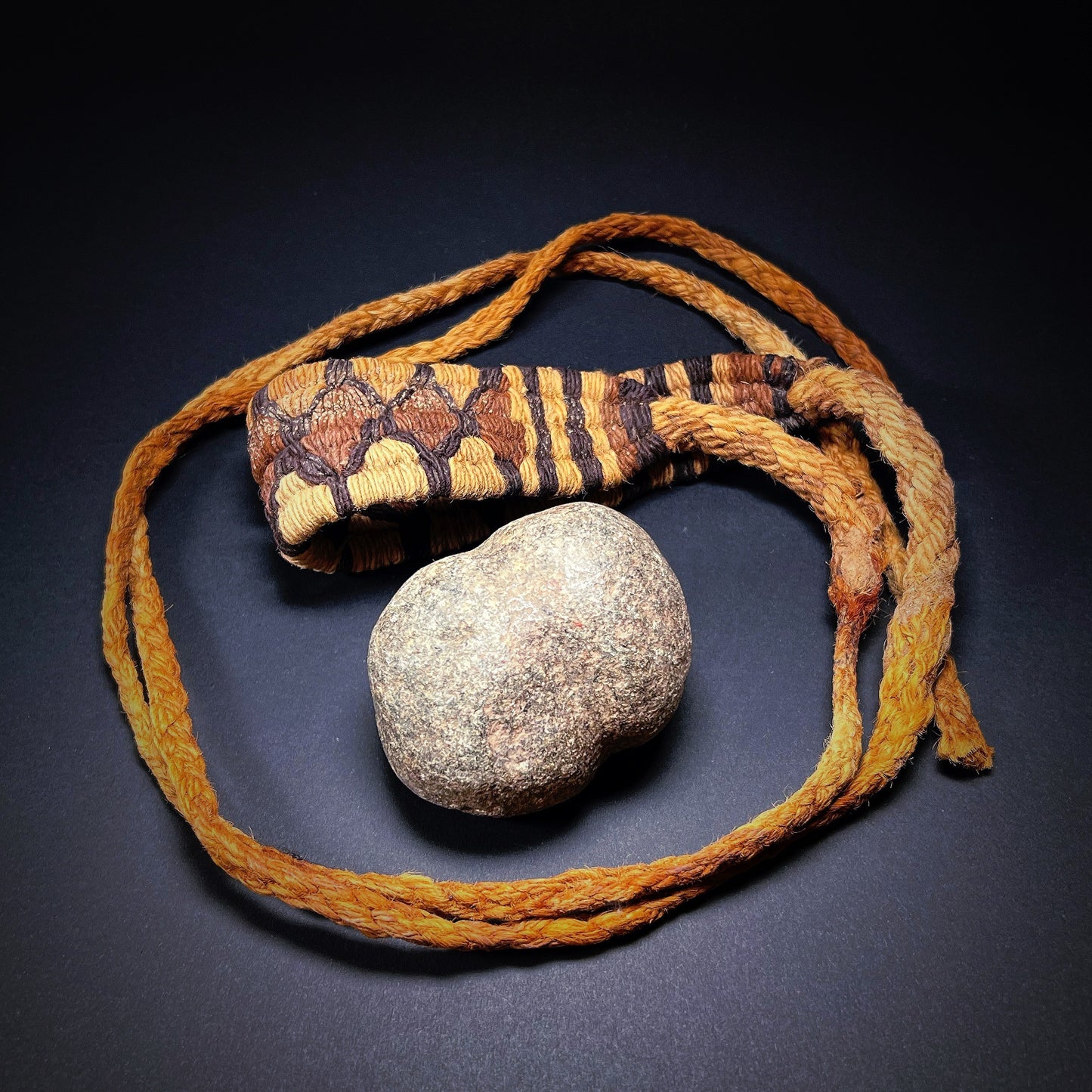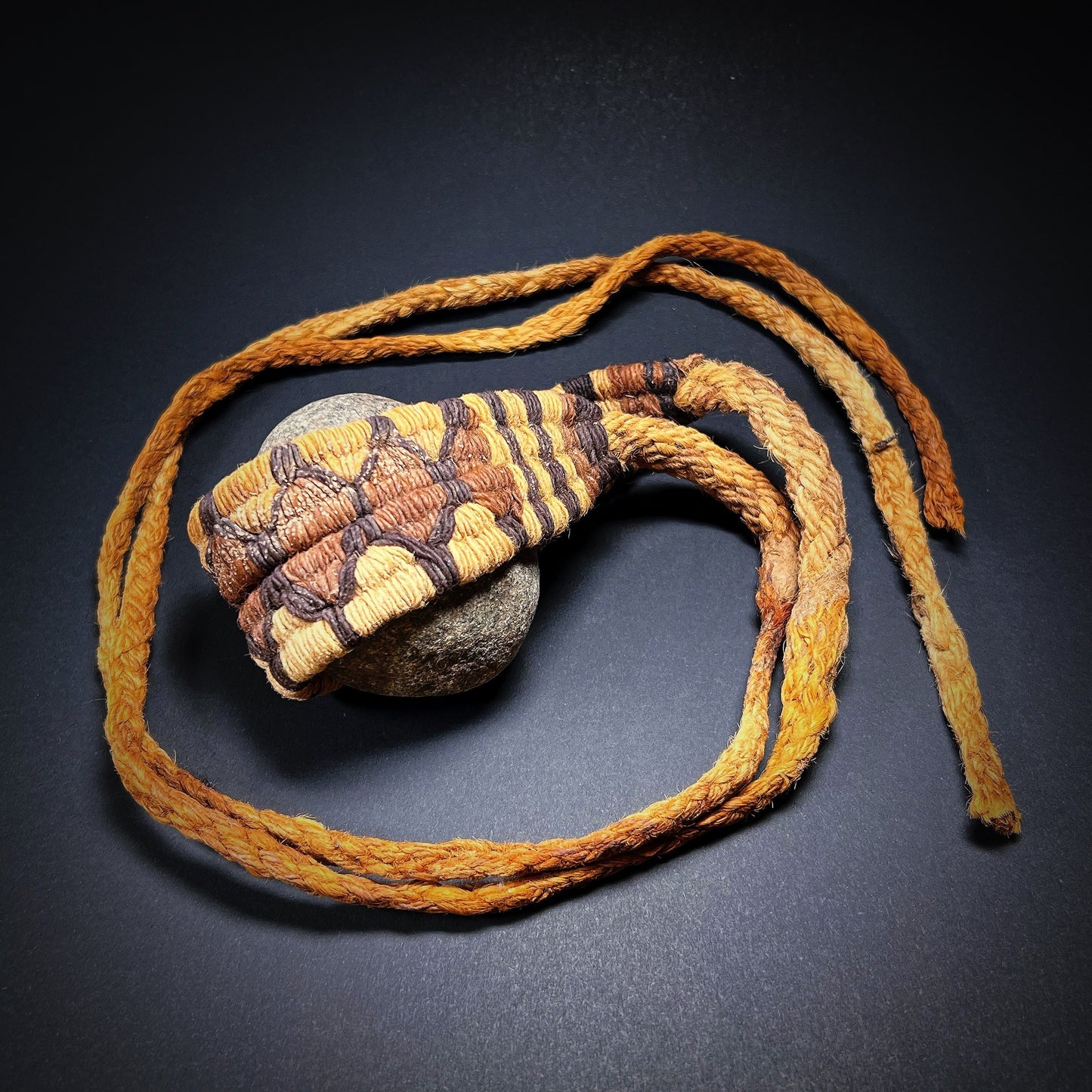Nazca Sling and Stone Bullet
Nazca Sling and Stone Bullet
Couldn't load pickup availability
Pre-Columbian era, Nazca civilization, 300 BC – 600 AD, Peru
A rare and mesmerizing Pre-Columbian Nazca sling, woven from cabuya fiber and accented with multi-colored camelid fiber, accompanied by its original stone bullet. Dating from 300 BC – 600 AD, this remarkable weapon showcases the Nazca civilization’s ingenuity in warfare and hunting.
The long fiber-banded cord is woven in thick strands of black, dark brown, and beige, with a central pouch specifically designed to cradle a stone projectile. When spun overhead and released with precision, a skilled user could launch the stone at bone-breaking velocity, making it an effective weapon for combat or hunting.
The Nazca civilization flourished in ancient Peru with Cahuachi as its ceremonial and cultural center. This non-urban pyramid complex, located in the Nazca Valley, was used for fertility and agricultural rituals. Nazca art and artifacts depict nature deities, ritual ceremonies, and warfare, reflecting a society deeply connected to spiritual beliefs and iconographic storytelling.
One of the most distinctive features of Nazca culture is their polychrome pottery, crafted using the coiling method and painted with earth-derived pigments before firing. The Nazca also had a headhunting tradition, with numerous trophy heads discovered in archaeological sites. These severed heads are frequently depicted in Nazca ceramic art, often with carrying ropes, underscoring their ritual significance.
Because the Nazca had no writing system, their pottery and textiles served as visual narratives, preserving shared beliefs, historical events, and religious practices. This intact Nazca sling and stone bullet is a stunning artifact of ancient warfare, reflecting the technical skill and cultural depth of this enigmatic civilization.
Excellent condition. Age-related minimal wear, loose threads and fraying. Rich earthen deposits. The ends lack the finger loop. Size approx. 140,0cm x 3,5cm x 0,5cm.
Provenance: From the estate of Paul Ragnar Wedendal Sr. & Paul Wedendal Jr. Collected in the 1940's to 1950's.
For a similar examples see:
Sling, The Metropolitan Museum of Art, New York, Accession Number: 1994.35.103 (https://www.metmuseum.org/art/collection/search/316928)
Sling, Princeton University Art Museum, Accession number: 1995-376 (https://artmuseum.princeton.edu/collections/objects/4624)



-
Shipping
The shipment will be prepared in the course of 3-5 days and dispatched via Posti Group Oyj or purchased item(s) can be picked up from our shop during the store's opening hours (Tarkk’ampujankatu 4, 00140, Helsinki, Finland). Within the Finland, all items are shipped via Posti Group Oyj unless otherwise requested. We pack the items carefully and mainly in recycled materials because we want to save nature. You will receive the tracking number for your items by e-mail.
-
Returns
Returns and exchange will be accepted within fourteen days (14) of receipt at the purchaser’s cost to include freight and packaging. Items must be returned in the same condition as when they were shipped, and will not be accepted if damaged or altered in any way. Please inform us via email (info@gotanmaailma.fi) or by calling +358408408352 before sending. We do not accept returns more than 14 days after delivery.



